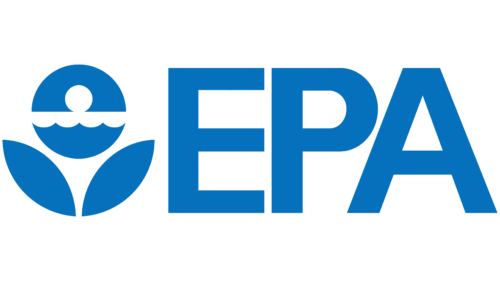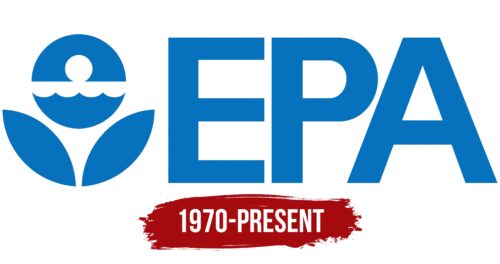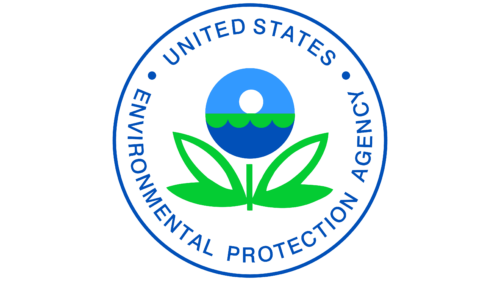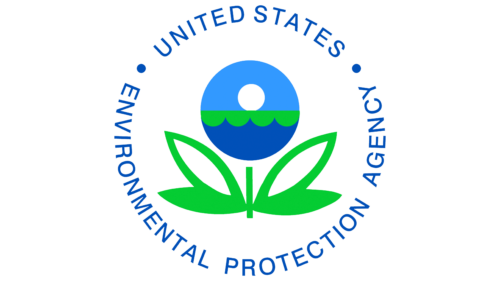The EPA logo reflects the care and conservation of Earth’s resources that the organization strives for. The emblem represents the ambition to provide a clean and reliable home for future generations and teach them important life principles.
EPA: Brand overview
| Founded: | December 2, 1970 |
| Founder: | Federal government of the United States |
| Headquarters: | William Jefferson Clinton Federal Building, Washington, D.C., U.S. |
| Website: | epa.gov |
EPA is an abbreviation for the independent Environmental Protection Agency. The EPA logo adorns the administrator’s office, 12 offices with their own structure, ten regional departments, and 27 laboratories where over 14,500 people work.
The creation of the EPA was a response to the problem of environmental pollution, which became acute in the United States in the early 1960s. The main task of the agency was to implement Richard Nixon’s plan to improve ecology. The new body’s responsibilities included conducting research, developing standards, monitoring, and training enterprises. The EPA began its work in 1970.
Meaning and History
The current logo of the organization was designed by the design firm Chermayeff & Geismar in 1977. Chermayeff and Geismar’s approach was characterized by minimalism and a preference for abstraction. The result of their work was so successful that the EPA logo has remained unchanged throughout the agency’s existence.
The emblem consists of a graphic image and an inscription.
What is EPA?
The EPA is an organization responsible for protecting the environment and ecology in the United States at the federal level. It has legislative and executive powers. It was founded in 1970.
The first part of the logo contains a symbol that has two meanings:
- A schematic flower with two leaves and a flower head between them. The presence of a plant element indicates the direction of the organization’s activities: maintaining biodiversity and preserving the green planet.
- A globe held by two palms. The image expresses the idea of care and protection for all living things on Earth. The effect is enhanced by the depiction of the sun, shore, and waves inside the circle. It is the EPA that initiated Earth Day, celebrated on April 22nd, and involves more than 1 billion people worldwide.
The drawing inside the globe symbolizes the main goal of the EPA: to preserve the purity of water, air, and soil to ensure a healthy future for people.
The inscription following the image represents the abbreviation of the organization’s full name – Environmental Protection Agency. The uppercase letters emphasize the importance of the mission carried out by the agency.
Seal
Unlike the emblem, the seal is more vivid, saturated, and colorful. It has a round dark blue thin rim with the full name of the organization around the circle. At the center is a drawing resembling the same flower. A stem and a green meadow are added to it. Inside the flower head are depicted blue sky, green grass, bright sun, and blue sea, creating a unique composition. The idea of the image remains the same: protecting all Earth’s resources so that it may flourish like a flower and delight its inhabitants with its beauty, akin to a precious pearl.
In 2018, the organization’s new leader, Scott Pruitt, attempted to change the visual identity, but his proposal met with sharp criticism.
Font and Colors
The main color of the logo is blue. The blue sky and blue waters of seas and oceans symbolize purity from smog, oil spills, and other chemical pollutants. This shade emphasizes the organization’s business-like approach. The EPA does not just publish articles and hold pickets but also develops practical instructions and standards and applies penalties for non-compliance.
EPA color codes
| French Blue | Hex color: | #0571bc |
|---|---|---|
| RGB: | 5 113 188 | |
| CMYK: | 97 40 0 26 | |
| Pantone: | PMS 3005 C |







